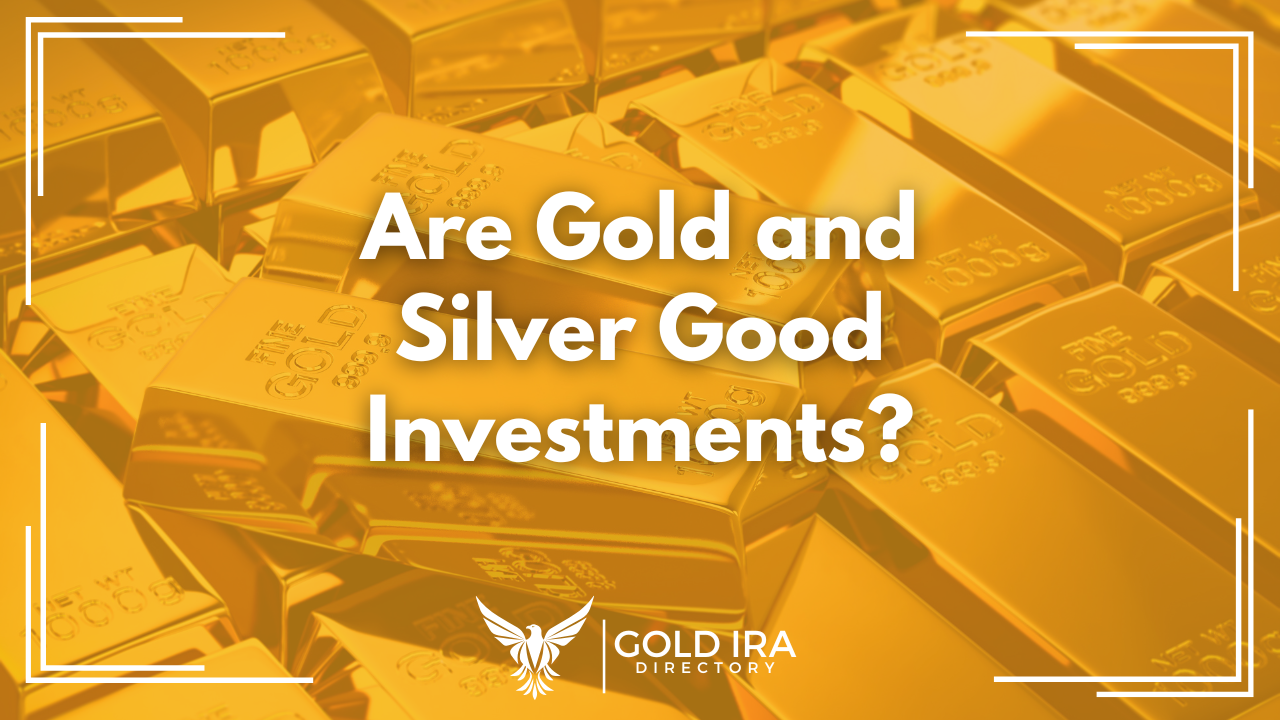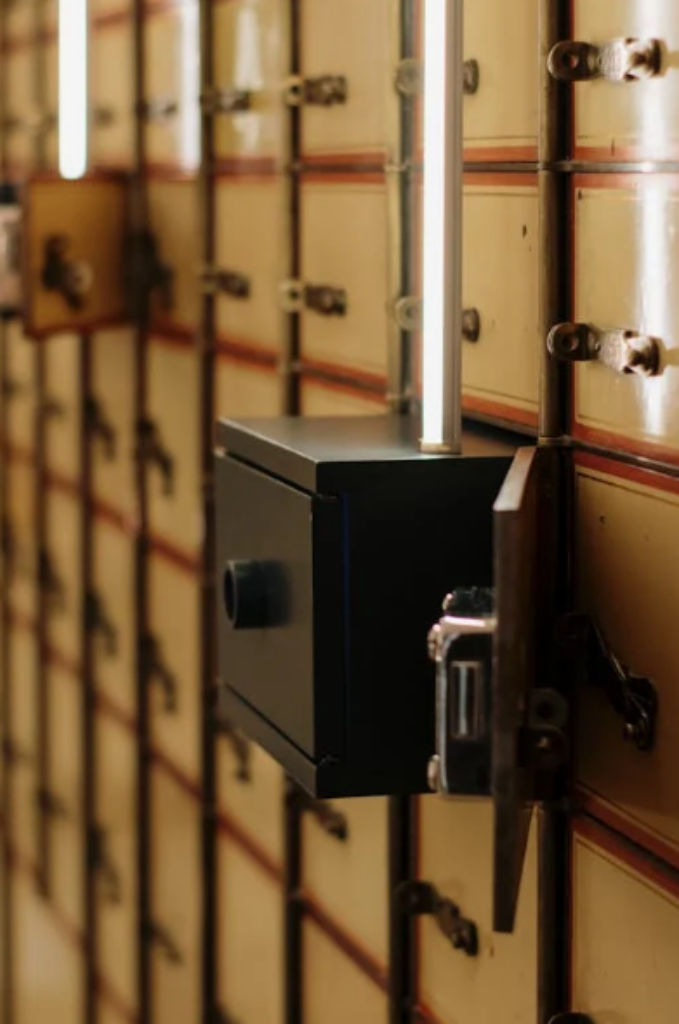Is Gold and Silver a Good Investment?

Gold and silver have become increasingly popular in the last few years due to the rising prices and inflation.
Historically, investors have considered precious metals as a safe haven asset.
But are they still a safe haven in modern times?
Some things you’ll learn in this article:
- Pros and Cons of Gold and Silver Investment
- Things to Consider Before Investing
- Best Ways to Invest in Gold and Silver
Consider Investing With Our #1 Ranked Gold IRA Company:
Augusta Precious Metals Best Gold IRA Company 2025
✅ Pros of Investing in Gold & Silver
- Hedge Against Inflation
Precious metals tend to hold value when currencies lose purchasing power. - Safe Haven in Uncertain Times
During economic or geopolitical turmoil, investors often flock to gold and silver. - Tangible Assets
Unlike stocks or bonds, metals are physical and can’t go bankrupt. - Portfolio Diversification
They often move differently than equities or real estate, helping reduce overall risk.
❌ Cons of Investing in Gold & Silver
- No Income Generation
Unlike stocks or real estate, metals don’t pay dividends or interest. - Price Volatility
Prices can swing widely based on investor sentiment and macroeconomic conditions. - Storage & Security
Physical metals need safe storage (vaults, safes, etc.), which can add cost and hassle. - Speculative Risk
If you’re chasing quick gains, prices can move against you fast.
🔁 Gold vs Silver
- Gold: More stable, more expensive, widely seen as a currency hedge.
- Silver: Cheaper, more volatile, also has industrial demand (which adds another layer of price influence).
👤 Is It Right for You?
- Great if you’re seeking long-term stability, a hedge, or something tangible.
- Not ideal if you’re looking for growth, income, or short-term gains.
Would you be investing physically (coins, bars), or through ETFs or mining stocks? That choice affects strategy too.
Different Ways You Can Invest in Gold and Silver:

There are several ways to invest in gold and silver, depending on your comfort level, goals, and whether you want physical metal or paper exposure. Here’s a breakdown of your main options:
1. Physical Gold & Silver
✔️ What it is:
Buying bullion coins, bars, or jewelry.
✅ Pros:
- You own a tangible asset.
- No counterparty risk (unlike paper assets).
- Can be a “last-resort” store of value.
❌ Cons:
- Requires secure storage (home safe, vault, etc.).
- Premiums and fees over spot price.
- Not as liquid as digital assets (selling takes more effort).
Common options:
- Gold: American Eagle, Canadian Maple Leaf, Krugerrand.
- Silver: Silver Eagles, Maple Leafs, bars.
2. Gold & Silver ETFs
✔️ What it is:
Exchange-traded funds that track the price of gold/silver.
✅ Pros:
- Easy to buy/sell like a stock.
- Low management fees.
- No need to store physical metal.
❌ Cons:
- You don’t own the metal directly.
- Some investors worry about whether the ETFs are fully backed.
Popular ETFs:
- Gold: SPDR Gold Trust (GLD), iShares Gold Trust (IAU)
- Silver: iShares Silver Trust (SLV)
3. Mining Stocks
✔️ What it is:
Investing in companies that mine gold or silver.
✅ Pros:
- Potentially higher returns than bullion (if the company performs well).
- You can earn dividends.
- Exposure to both metal prices and business growth.
❌ Cons:
- Higher risk and volatility.
- Company-specific risks (management, production issues).
Examples:
- Gold: Newmont Corporation (NEM), Barrick Gold (GOLD)
- Silver: First Majestic Silver (AG), Pan American Silver (PAAS)
4. Mutual Funds & ETFs for Miners
✔️ What it is:
Funds that hold a basket of mining companies.
✅ Pros:
- Diversified exposure to the mining sector.
- Less risk than betting on one stock.
❌ Cons:
- Still tied to market conditions and sector performance.
Examples:
- VanEck Gold Miners ETF (GDX)
- Global X Silver Miners ETF (SIL)
Futures & Options (Advanced)
What it is:
Contracts that speculate on future prices of gold or silver.
✅ Pros:
- Huge leverage potential.
- Can be used to hedge other investments.
❌ Cons:
- High risk, complex, not for beginners.
- You can lose more than your initial investment.
6. Digital/Tokenized Gold & Silver
What it is:
Crypto-based assets backed by physical gold or silver.
✅ Pros:
- Easy, fast, and borderless transactions.
- Some offer fractional ownership.
❌ Cons:
- Newer tech – trust and regulation still evolving.
- Counterparty and platform risk.
Examples:
- Paxos Gold (PAXG), Tether Gold (XAUT)
How Much Gold and Silver Should You Add To Your Portfolio
When it comes to gold and silver, the key principle is strategic allocation — not overexposure. Precious metals are a great tool for diversification and protection, but they shouldn’t dominate your portfolio. A balanced approach is best.
General Rule of Thumb: 5%–15% of Your Portfolio
Here’s how that breaks down:
- 5%: For conservative investors who want a small hedge against inflation or market uncertainty.
- 10%: A solid middle ground — enough to benefit from gold/silver during downturns without sacrificing liquidity or growth.
- 15% (or more): For more risk-tolerant investors, or during periods of high inflation or geopolitical instability.
“Gold and silver aren’t meant to make you rich — they’re meant to keep you rich.”
Tailoring the Allocation to You
The exact percentage depends on:
- Your risk tolerance: If you’re cautious about market volatility or concerned about inflation, a higher allocation may make sense.
- Your investment goals: Are you preserving wealth, preparing for market shocks, or trying to speculate on metals prices?
- Your age and time horizon: Younger investors with longer timeframes may prioritize growth-oriented assets (like equities), while older investors may value the stability metals offer.
- Market conditions: If inflation is rising or markets feel unstable, you might temporarily lean more into metals as a defensive play.
How to Spread It Within the Allocation
You don’t have to choose just one form of gold or silver:
- Physical metals (bullion or coins): Good for security-minded investors.
- ETFs: Easy to trade and highly liquid.
- Mining stocks or mutual funds: More growth potential, but also more volatile.
- Digital gold/silver: A new, tech-forward option if you’re comfortable with platforms and custody trust.
Gold and silver are insurance policies for your portfolio — not the growth engine. The goal is to balance protection with performance. Keeping your metals allocation within 5–15% ensures you benefit from their stability without losing out on the higher returns of equities or other asset classes.
How a Gold IRA Might Help With Your Gold and Silver Investment:
Absolutely — a Gold IRA (Individual Retirement Account) can be a smart way to hold gold (and sometimes silver, platinum, or palladium) within a tax-advantaged retirement account. Let me walk you through how it works and why it might be useful.
What Is a Gold IRA?
A Gold IRA is a self-directed IRA that allows you to hold physical precious metals (usually gold or silver coins/bars) instead of traditional assets like stocks or mutual funds.
It’s still an IRA — which means you get the same tax benefits, whether it’s:
- A Traditional Gold IRA (tax-deductible contributions, tax-deferred growth)
- Or a Roth Gold IRA (tax-free growth, tax-free withdrawals in retirement)
Why It Can Be Useful
1. Diversification in Your Retirement Portfolio
A Gold IRA lets you hedge against market volatility, inflation, and currency risk — all within your retirement plan. This gives your nest egg added resilience during downturns or crises.
2. Protection from Inflation & Dollar Weakness
Gold historically maintains its value when paper currencies lose purchasing power. In inflationary periods, gold often acts as a financial shock absorber.
3. Tax-Deferred (or Tax-Free) Growth
If you invest in gold outside an IRA, any profits you make are taxable (often at the collectibles tax rate, which can be higher). Inside an IRA:
- With a Traditional Gold IRA, you defer taxes until withdrawal.
- With a Roth Gold IRA, qualified withdrawals are 100% tax-free.
4. Physical Ownership, Institutional Security
You actually own physical gold (coins or bars), but it’s stored securely in an IRS-approved depository — not at home. This gives peace of mind and meets regulatory requirements.
Things to Keep in Mind
- No personal possession: You can’t keep the gold at home; it must be stored by an approved custodian.
- Fees: Gold IRAs often come with higher setup, storage, and custodial fees compared to regular IRAs.
- Liquidity: Selling physical gold in an IRA can take longer than selling stocks or ETFs.
- Eligible Metals Only: The IRS has strict rules about what kinds of gold/silver are allowed (e.g., American Eagles, Canadian Maple Leafs, certain purity standards).
When Is It a Good Fit?
A Gold IRA might be ideal if:
- You’re nearing retirement and want stability.
- You already have stock-heavy IRAs and want to add non-correlated assets.
- You’re concerned about economic instability, inflation, or dollar depreciation.
Final Thought
Think of a Gold IRA as a long-term insurance policy within your retirement strategy — not a short-term play. It won’t replace growth assets, but it can protect your wealth and add real peace of mind during turbulent times.



